
For construction business owners, establishing a strong brand presence on LinkedIn is not just beneficial — it's essential. In today's digital age, your personal brand can set you apart from the competition and be your biggest competitive advantage.
It's what others think and say about you as a leader and can significantly impact your business success. Recent trends show that executives with a well-developed personal brand often land bigger deals, secure better partnerships, and foster robust industry relationships.
By actively engaging on LinkedIn and showcasing your expertise, you can elevate your company's visibility, attract high-level clients, and unlock new business opportunities.
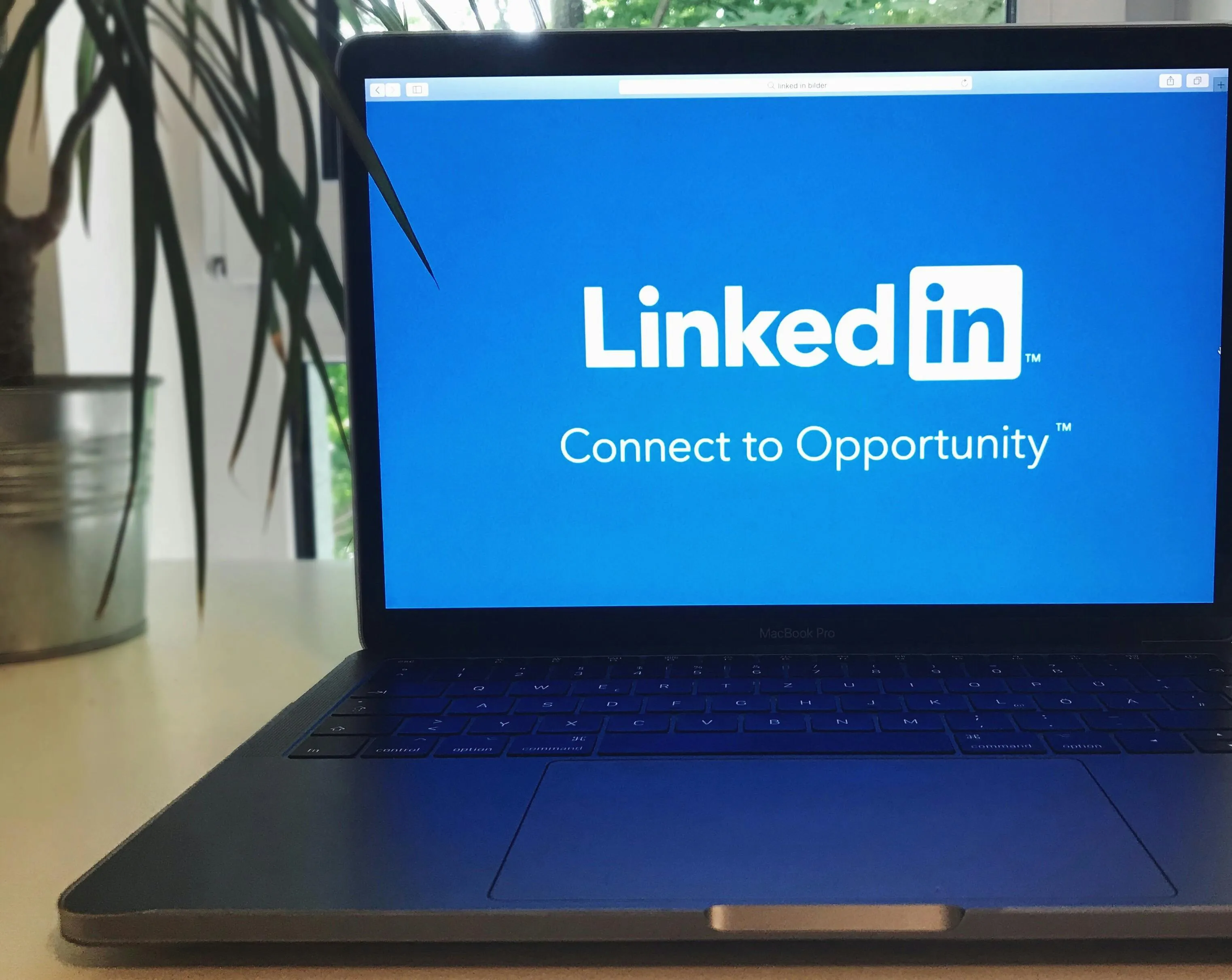

In the construction industry, having a strong personal brand is not just a luxury—it's a necessity. A personal brand goes beyond the confines of a title, a company logo, or a business card. Instead, it is people's perception of you as a leader, built through your actions, communication, and the value you deliver. A significant component of personal branding is the face and voice of your company, which can set you apart from competitors and significantly impact your career in construction.
Construction executives with powerful personal brands tend to land the most lucrative deals, secure high-quality partnerships, and build robust relationships within the industry. For instance, a personal brand can translate to being invited by top-tier clients and partners to collaborate on significant projects. Increased visibility comes with showcasing your industry expertise, engaging in authentic interactions, and establishing yourself as a trustworthy leader.
More than 76% of buyers express greater trust in businesses wherein leadership is visible and active. Sixty-four percent of respondents believe that CEOs who participate on social media appear more approachable and trustworthy. Additionally, companies with well-branded executives generate 50% more revenue opportunities, and executive influences a remarkable 81% of large purchase decisions thought leadership. These statistics underscore the importance of personal branding in fostering business growth and sustainability in construction.
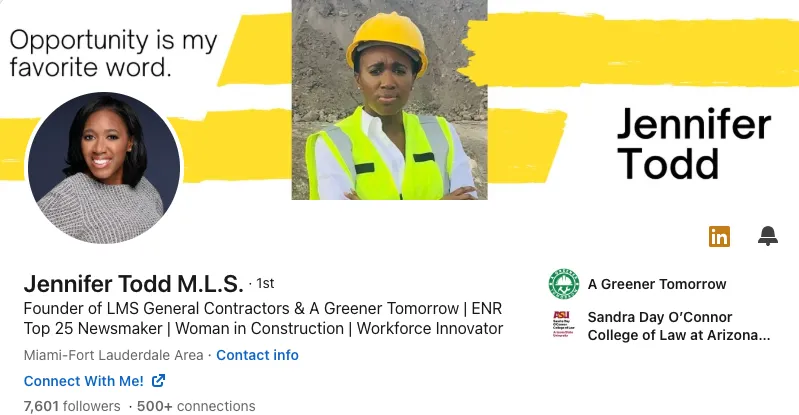
Understanding the distinction between a personal brand and a company brand is crucial. A personal brand centers around you as the leader, encapsulating your expertise, authenticity, and connection with your audience. Building a personal brand involves creating trust through human connection and personal relationships.
On the other hand, a company brand is about your business's collective reputation. It is reflected in your company's visuals, customer service, messaging, and overall experience. A strong company brand embodies consistency, professionalism, and the market promise that your business stands by.
Consider the scenario of a top construction company seeking out a sub-contractor or a general contractor to work with them on their projects. They see your competitor's CEO actively engaging with 10,000 followers on LinkedIn, regularly sharing industry insights, and being recognized as a thought leader. Meanwhile, you haven't updated your LinkedIn profile since 2019. In such cases, the absence of a personal brand presence online can cost opportunities that could have been seized through proactive brand building.
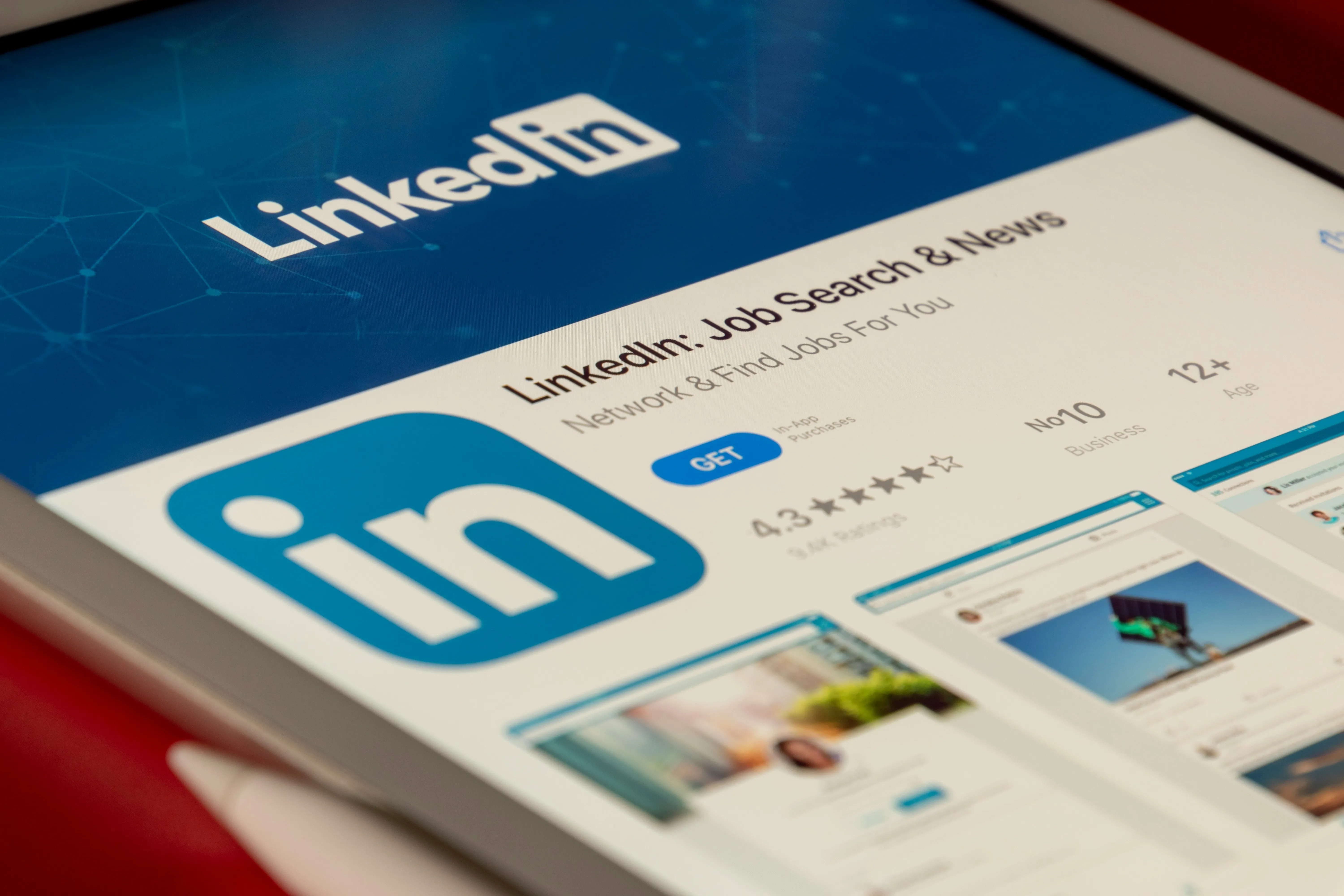
LinkedIn is an invaluable platform for construction business owners aiming to enhance their brand presence. As the world's largest professional networking site, LinkedIn provides unparalleled opportunities for connecting with industry peers, potential clients, and thought leaders in construction. The platform facilitates the display of your expertise, insights, and achievements, acting as a powerful extension of your offline professional endeavors.
The advantages of utilizing LinkedIn include enhanced visibility and credibility. For instance, sharing industry-related content not only demonstrates thought leadership but also attracts attention from significant stakeholders in the construction sector. Engaging with your network through comments and discussions further reinforces your position as a knowledgeable and reliable leader.
Moreover, LinkedIn can significantly bolster recruitment efforts. When top talent encounters your insightful posts and understands the values and vision you stand for, they'll be inclined to reach out. In today's digital age, where 94% of B2B marketers use LinkedIn for content distribution, not being active on the platform can result in missed opportunities and a competitive disadvantage.
One of the most effective ways to build your brand on LinkedIn is by creating and sharing valuable content. To begin with, regularly post articles, insights, and updates about industry trends, leadership lessons, and market developments. These articles can include in-depth analyses of current trends, market predictions, and case studies of past projects that highlight your expertise.
Beyond publishing written content, engage in multimedia approaches, like posting videos and infographics, to reach wider audiences and cater to different preferences. Behind-the-scenes looks at construction projects, or a short video explaining complex technical problems in simple terms can captivate your audience. Such content showcases your expertise and humanizes your personal brand, making it more relatable and approachable.
Storytelling is another powerful approach to reinforcing your personal brand. Share your journey in the construction industry, narrate experiences, and highlight challenges overcome and the lessons learned along the way. Illustrate customer victories and project milestones to inspire others while positioning yourself as a thought leader.
An essential aspect of personal branding on LinkedIn is cultivating authentic relationships and connections. Begin by engaging meaningfully with your network, responding to comments, and participating in group discussions relevant to the construction industry. This active participation enhances your visibility and establishes you as an accessible and thoughtful leader.
It's pivotal to embrace authenticity in your interactions, as this fosters genuine relationships based on trust and mutual respect. Attend virtual industry events, webinars, and LinkedIn Live sessions to expand your network and learn from other experts. Showcase your personality, and do not shy away from sharing personal stories or insights, which can make your profile stand out in the sea of otherwise generic business profiles.
Utilize LinkedIn's features, such as endorsements, recommendations, and InMail, to build connections and deepen existing relationships. Networking can lead to partnerships, collaborations, and friendships that last years.
Overall, leveraging LinkedIn for personal branding involves sharing your unique voice and perspective with authenticity and transparency. By consistently providing valuable content and actively engaging with your network, you can transform your LinkedIn presence from static to dynamic, resulting in increased visibility and business growth opportunities in the construction sector.
With the construction industry becoming fiercely competitive, leveraging powerful marketing strategies on LinkedIn can help construction owners build solid brands, strengthen relationships, and gain a competitive edge. Here, we'll explore actionable approaches you can take to grow your construction business.
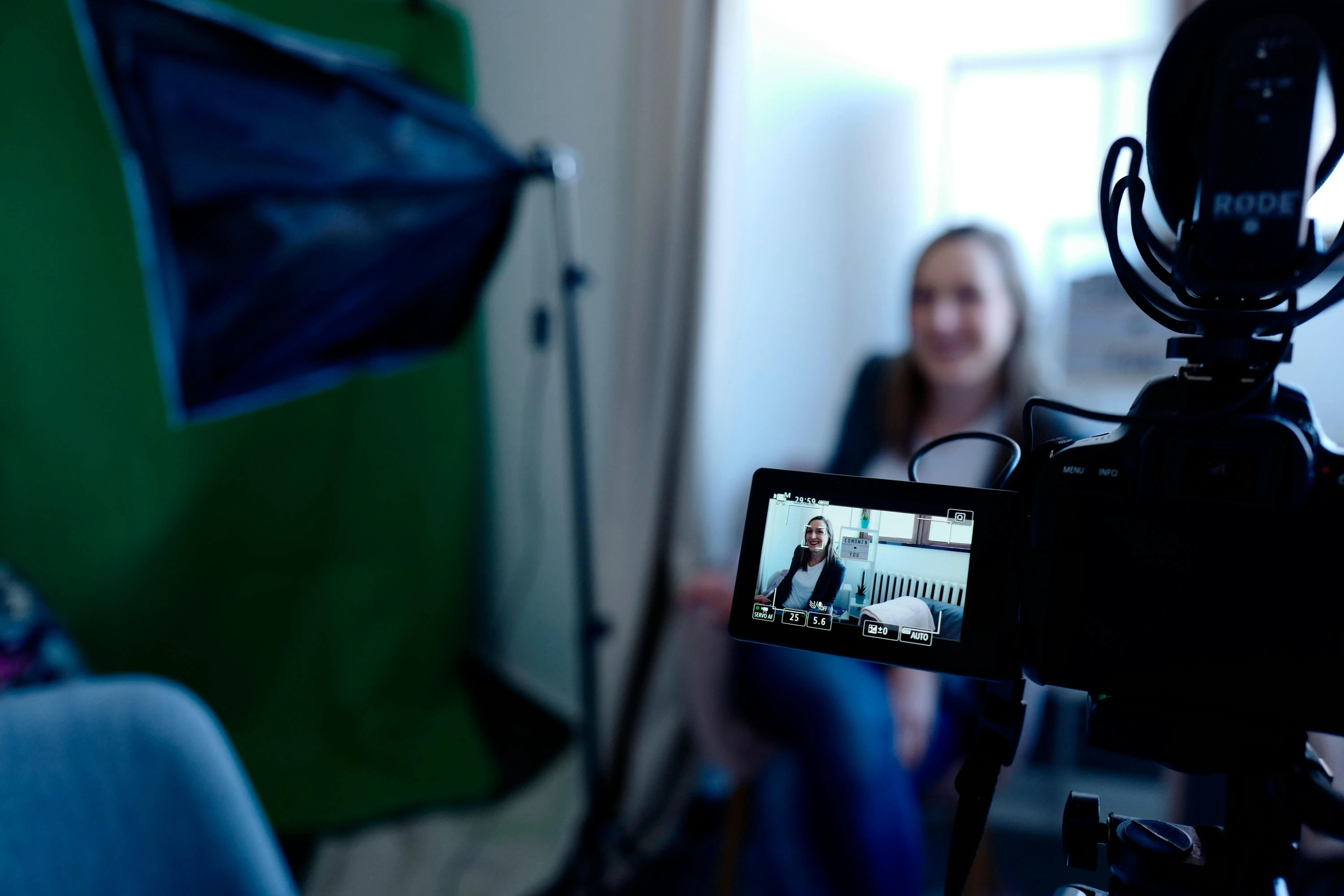
In the construction industry, visibility and authority are more crucial than ever. LinkedIn provides construction owners with a platform to showcase their expertise and make their presence known to potential clients and partners. Here's how to enhance visibility:

Building strong relationships with clients and partners is essential for sustainable business growth. LinkedIn offers several strategies to nurture these connections:

Personal branding is increasingly critical in distinguishing yourself from competitors in the construction industry. By focusing on your personal brand, you can create a distinct identity that resonates with your target audience:
Construction owners serious about LinkedIn marketing should leverage the platform's built-in analytics to refine their approach:
Setting up a regular cadence to review these metrics (weekly or monthly) allows you to continuously optimize your content strategy based on data rather than assumptions.
While organic reach is valuable, strategic paid promotion can significantly amplify your impact:
For optimal results, construction companies should allocate 15-20% of their marketing budget to LinkedIn paid promotion. A focused approach targeting specific project types or market segments often yields better results than broad campaigns.
Harness the collective power of your team to amplify your brand message:
When executed properly, employee advocacy can increase your content's reach by 561% compared to sharing through company channels alone, according to LinkedIn's own research.
For construction companies pursuing targeted business development, LinkedIn's Sales Navigator offers powerful capabilities:
Construction firms report that Sales Navigator can reduce prospecting time by up to 30% while increasing the quality of leads, making it a worthwhile investment for companies focused on growth.
The construction industry can face unexpected challenges that require careful communication:
Having a pre-established LinkedIn communication plan for crisis situations allows you to respond effectively when challenges arise, protecting your hard-earned reputation.
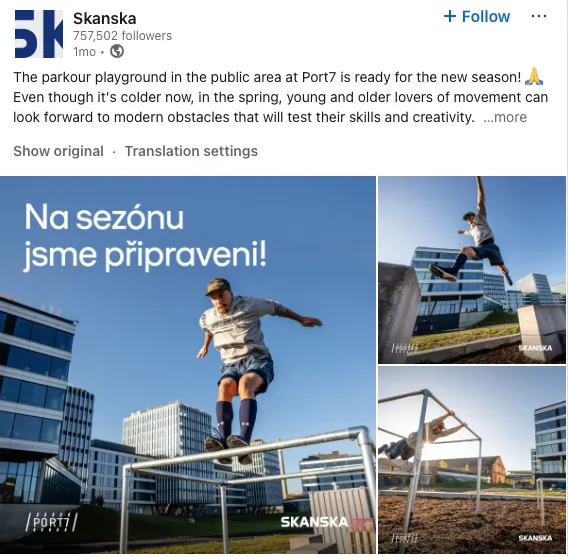
Skanska USA Skanska USA has built one of the most engaged LinkedIn communities in the construction sector with over 230,000 followers. Their success comes from a balanced content approach:
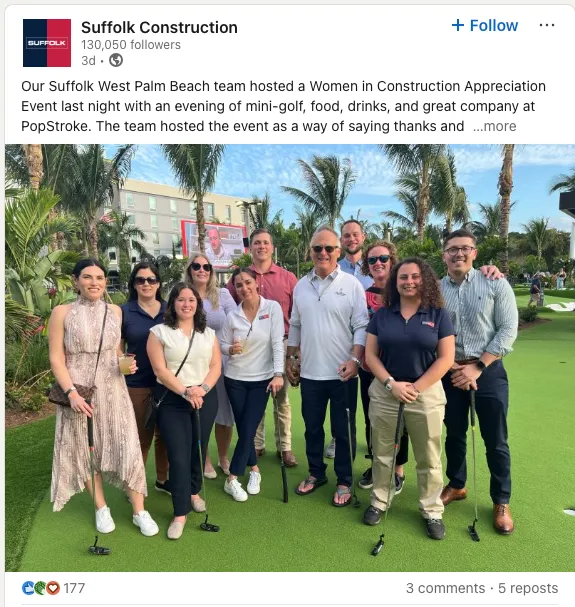
Suffolk Construction Suffolk's "Build Smart" approach permeates their entire LinkedIn strategy:
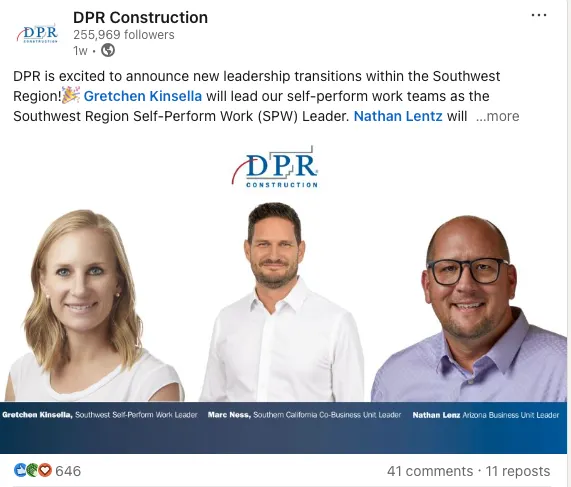
DPR Construction DPR has built a reputation for authentic engagement on LinkedIn:
George Pfeffer - President at DPR Construction

Ann McNeill - President at MCO Construction
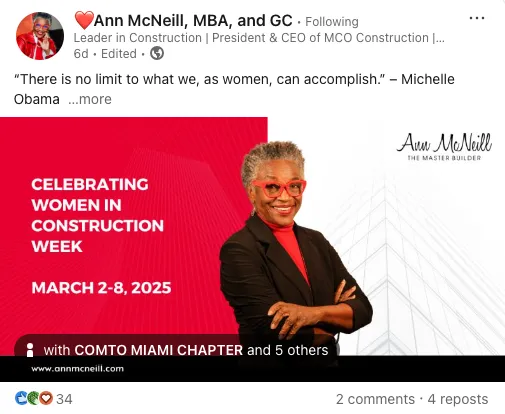
Angie Simon - CEO of Western Allied Mechanical

Fred Perpall - CEO of The Beck Group
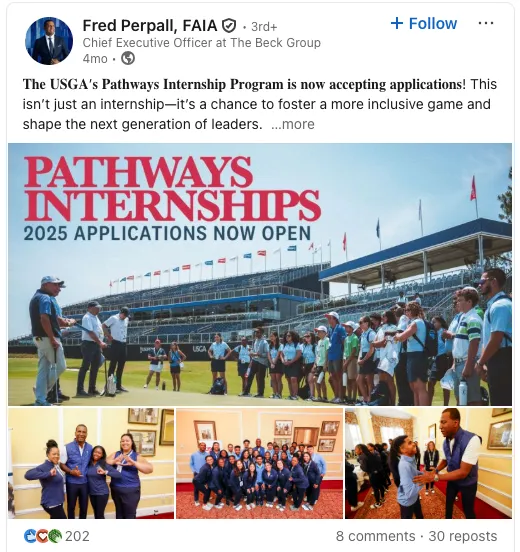
Dan Johnson - President and CEO of Mortenson Construction
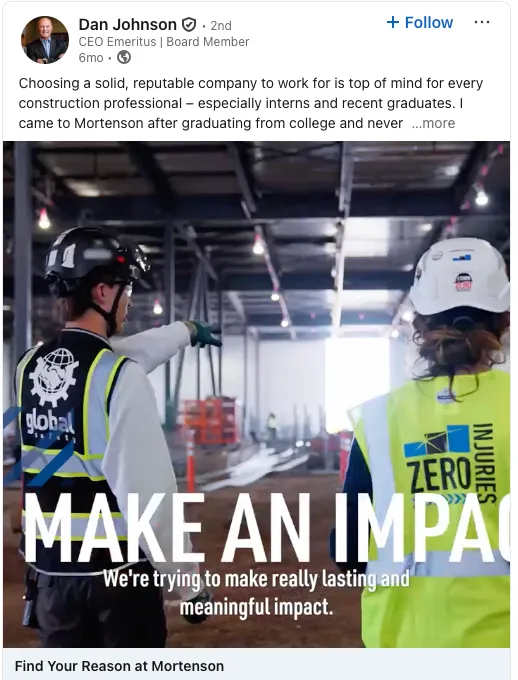
Carol Warkoczewski - Founder of I-LinCP (Institute for Leadership in Capital Projects)

These successful LinkedIn users share common practices:
By studying and adapting strategies from these successful examples, construction owners can develop LinkedIn presences that drive meaningful business growth and establish industry leadership.
In conclusion, building a strong personal brand is no longer optional for construction owners; it's a necessity for business growth. By leveraging LinkedIn, construction executives can enhance their visibility and establish themselves as thought leaders in the industry. This proactive approach helps foster trust and build stronger relationships with potential clients, partners, and manufacturers. The data underscores the importance of personal branding, with 76% of buyers showing increased trust in businesses with active, visible leadership on social media. Those who shell out the time and effort to cultivate their personal brand often find themselves at the forefront, reaping benefits such as increased revenue opportunities and the ability to command premium pricing.
The most successful construction companies on LinkedIn implement comprehensive strategies that include analytics tracking, paid promotion, employee advocacy, advanced prospecting tools, and crisis management planning. By studying industry leaders like Skanska USA, Suffolk Construction, and DPR Construction—as well as standout executives like Mark Olson, Sarah Williams, and Carlos Rodriguez—other construction professionals can adopt proven approaches that drive meaningful business results.
Investing in a personal brand today is crucial to securing a competitive edge and nurturing long-standing success in the field of construction. So, take a leap forward and let LinkedIn be the platform where you grow your business by showcasing your industry expertise and authentic leadership.